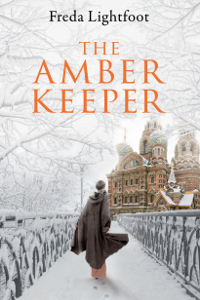A Traditional Russian Christmas
Religious celebrations of any kind, including Christmas, were frowned upon by the Soviet State, and largely banned following the October Revolution of 1917. Fortunately this policy was changed in 1935, although the Festive season became a more secular celebration held in the New Year. Nowadays, Christmas in Russia is normally held on the 7 January, although many Russians celebrate it more traditionally on the 25th December as well, as many other countries do. The official Christmas and New Year holidays in Russia last from December 31st to January 10th.
Some of the old traditions have survived, such as the decoration of a tree, always an important part of the festivity. In the old days a tree would be brought in from the forest and decorated with paper lanterns, bows of ribbon, home-made crackers, spice breads, nuts and sweets wrapped in gold and silver leaf paper. Candles would be attached to the lower branches where they could easily be put out with a wet sponge on the end of a stick. The children would hang up a stocking from the chimney piece just as we do in the UK.
Traditionally, there were Church services on Christmas Eve, and Christmas Day, also on 6 January. The congregation were expected to stand throughout the long service, even the Tsar and Tsarina, and the church would often be so cold that feet would go numb, as temperatures outside could be as low as minus 25 degrees. All servants of the household, including the governess, were expected to attend in their best clothes, complete with a warm hat and scarf.
Dinner on Christmas Eve generally consisted of twelve dishes to mark the Twelve Apostles. Roast pork was a popular dish, as was goose with apples, venison or lamb. This would be followed by fruit and jellies, candy and little cakes made with treacle or honey, ring-shaped biscuits. Plus a selection of dates, figs, walnuts and chocolates.
None of this delicious food was available during the revolution, however. In a diary I read of the period, written by a British woman, she said: ‘By way of a Christmas feast, we each had two little meat-balls yesterday. We had bought 5 lb of beef at 100 roubles the lb. We were wonderfully lucky getting it so cheap.’ But then on the 5th January she and her friend were ordered by the House Committee to clear snow from the street on the 6th and 7th from 1 to 3 p.m. Even worse, in Moscow people were ordered from their beds on Christmas night to clear the snow from the tram lines as fuel needed to be delivered, otherwise the lights would have gone out. So much for their celebrations.
Millie, who was governess to the children of the Countess Belinsky in The Amber Keeper, did her best to make Christmas a happy time, although she had more immediate problems on her mind.
 Title: The Amber Keeper by Freda Lightfoot
Title: The Amber Keeper by Freda Lightfoot
Publisher: Lake Union Publishing
Genre: Historical, Romance
Length: 385 pages
Summary:
Set against the backdrop of revolutionary Russia, The Amber Keeper is a sweeping tale of jealousy and revenge, reconciliation and forgiveness.
English Lake District, 1960s: A young Abbie Myers returns home after learning of her mother’s death. Estranged from her turbulent family for many years, Abbie is heartbroken to hear that they blame her for the tragedy.
Determined to uncover her mother’s past, Abbie approaches her beloved grandmother, Millie, in search of answers. As the old woman recounts her own past, Abbie is transported back to the grandeur of the Russian Empire in 1911 with tales of her grandmother’s life as a governess and the revolution that exploded around her.
As Abbie struggles to reconcile with her family, and to support herself and her child, she realizes that those long-ago events created aftershocks that threaten to upset the fragile peace she longs to create.
Purchase Links: Amazon US * Amazon UK
Excerpt
The Count joined us for Christmas, anxious to escape Petrogad himself for a while, which was just as well as he looked in need of a rest. In the city the weather was bitterly cold but here in the Crimea the winters were much milder, sheltered as we were from the worst of the bitter north winds by the mountains, although there was often snow on the higher slopes above the town. I admit to finding it all rather exciting and had great fun helping the children to make paper lanterns and home-made Christmas crackers. A tree was brought from the forest which we decorated with walnuts and chocolates wrapped in gold and silver paper. Then we fixed candles on the lower branches where we could easily reach them. But as I had no wish to risk a fire, I set a long stick with a wet sponge fixed to the end close by, just in case.
The children hung up a stocking by the chimney, and, in accordance with tradition, Nyanushki set an old galosh in the empty grate that would later have snow packed round it, so that the children would know when Santa Claus had been.
On the morning of Christmas Eve I took them out into the woods to collect holly, mistletoe and ivy with which to decorate the house. Such plants do not grow in the north of Russia, the climate being too severe, so it was a thrill for me to have echoes of Christmases back home in dear old England.
As the children and I wound the ivy around the banister rails, Stefan climbed the step-ladder to pin up the holly and mistletoe over pictures and door frames. When he was done he called me over.
‘Is that enough, do you think?’ I barely had time to answer before he caught me with a kiss. The children thought this very funny and applauded loudly, roaring with laughter. I was not so amused, particularly when a voice rang out behind us in the hall.
‘Ah, so this is what you two get up to when my back is turned?’
Too startled to reply I dipped a curtsey, carefully keeping my head down so that the Countess could not see how my cheeks flamed. ‘Now look what you’ve done,’ I hissed at Stefan under my breath.
She sauntered over in that graceful way she had, looking as elegant and magnificent as ever in a gown of embroidered gold satin encrusted with pearl beads, several strings of pearls hung about her neck over a décolletage cut daringly low. The Count and Countess were to attend a Christmas ball that evening and I have to confess I had never seen her looking more beautiful. Placing herself below the mistletoe she glanced provocatively across at Stefan. ‘Is this where I should stand for my Christmas kiss?’ she asked.
Stefan’s embarrassment was all too plain to see. A crimson stain crept up his throat and over the tightness of his jaw as he darted me a glance of appeal. Aching with sympathy for the awkward situation in which she was placing him, I clumsily attempted to intervene.
‘It is snowing outside, your ladyship, if you are ready to leave now shall I fetch your coat and fur wrap?’
She didn’t even glance in my direction, keeping her gaze firmly fixed on the object of her desire, my own beloved Stefan, as she ordered me to do so. It seemed that far from saving him I had accidentally created the necessity to leave him alone with her.
Author Bio
 Born in Lancashire, Freda Lightfoot has been a teacher and a bookseller, and in a mad moment even tried her hand at the ‘good life’. Inspired by this tough life on the fells, memories of her Lancashire childhood, and her passion for history, she has published forty family sagas and historical novels including Daisy’s Secret and Watch for the Talleyman. Freda has lived in the Lake District and Cornwall, but now spends her winters in Spain and the rainy summers in the UK.
Born in Lancashire, Freda Lightfoot has been a teacher and a bookseller, and in a mad moment even tried her hand at the ‘good life’. Inspired by this tough life on the fells, memories of her Lancashire childhood, and her passion for history, she has published forty family sagas and historical novels including Daisy’s Secret and Watch for the Talleyman. Freda has lived in the Lake District and Cornwall, but now spends her winters in Spain and the rainy summers in the UK.
For more information about Freda, visit her website: www.fredalightfoot.co.uk.
Author Links: Website * Facebook * Twitter * Blog
Giveaway
Follow the rest of the tour HERE.


Thanks for inviting me. Lovely to be here on your wonderful blog.
Best wishes, Freda
I love historical romances and meeting new authors!
It’s a very engaging premise!
I love Historical s. And i absolutely love this story line. I really really wanna know how it ends.
Thanks for sharing
Thanks for visiting!
Thanks so much!!! This looks awesome.